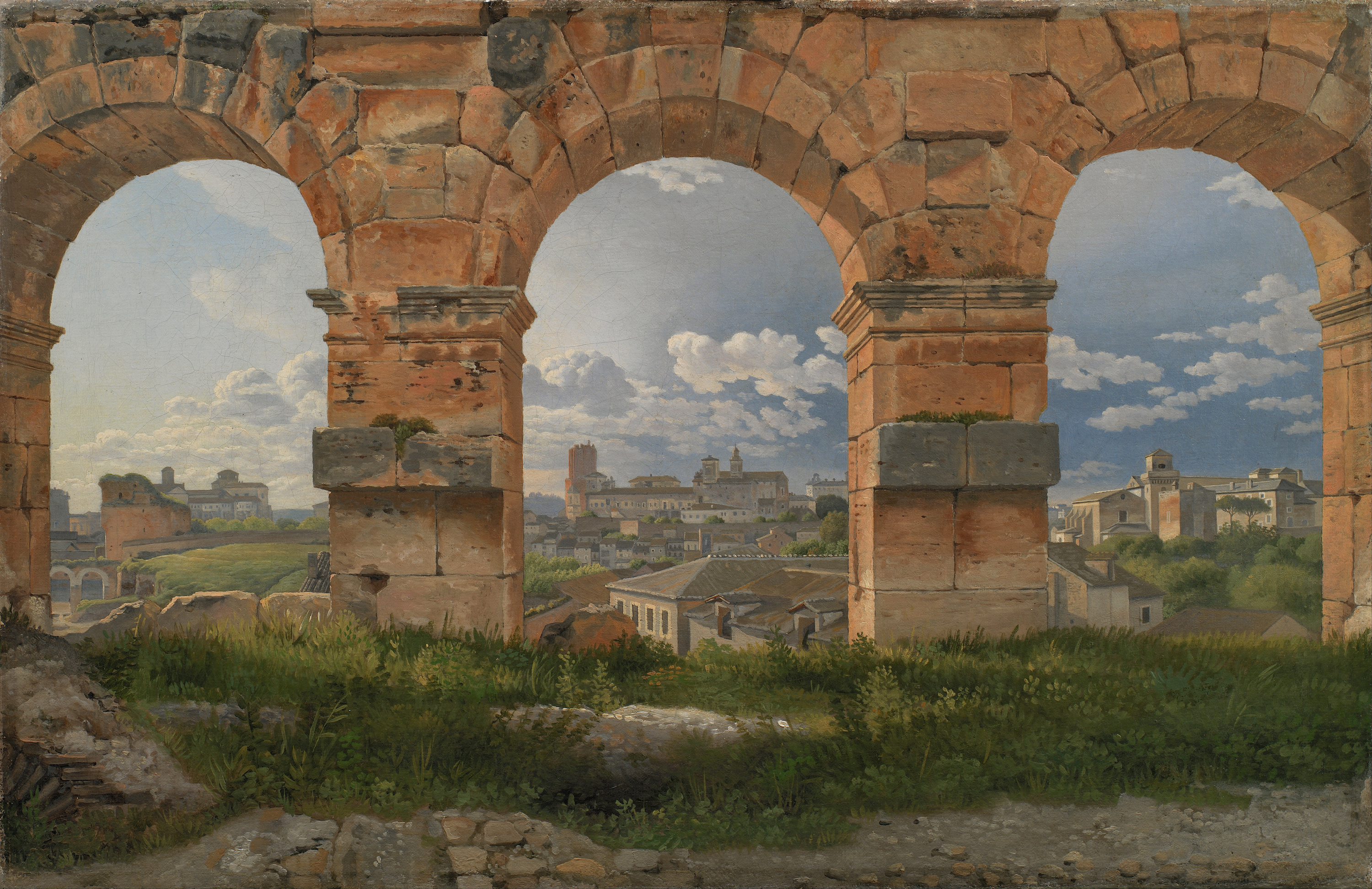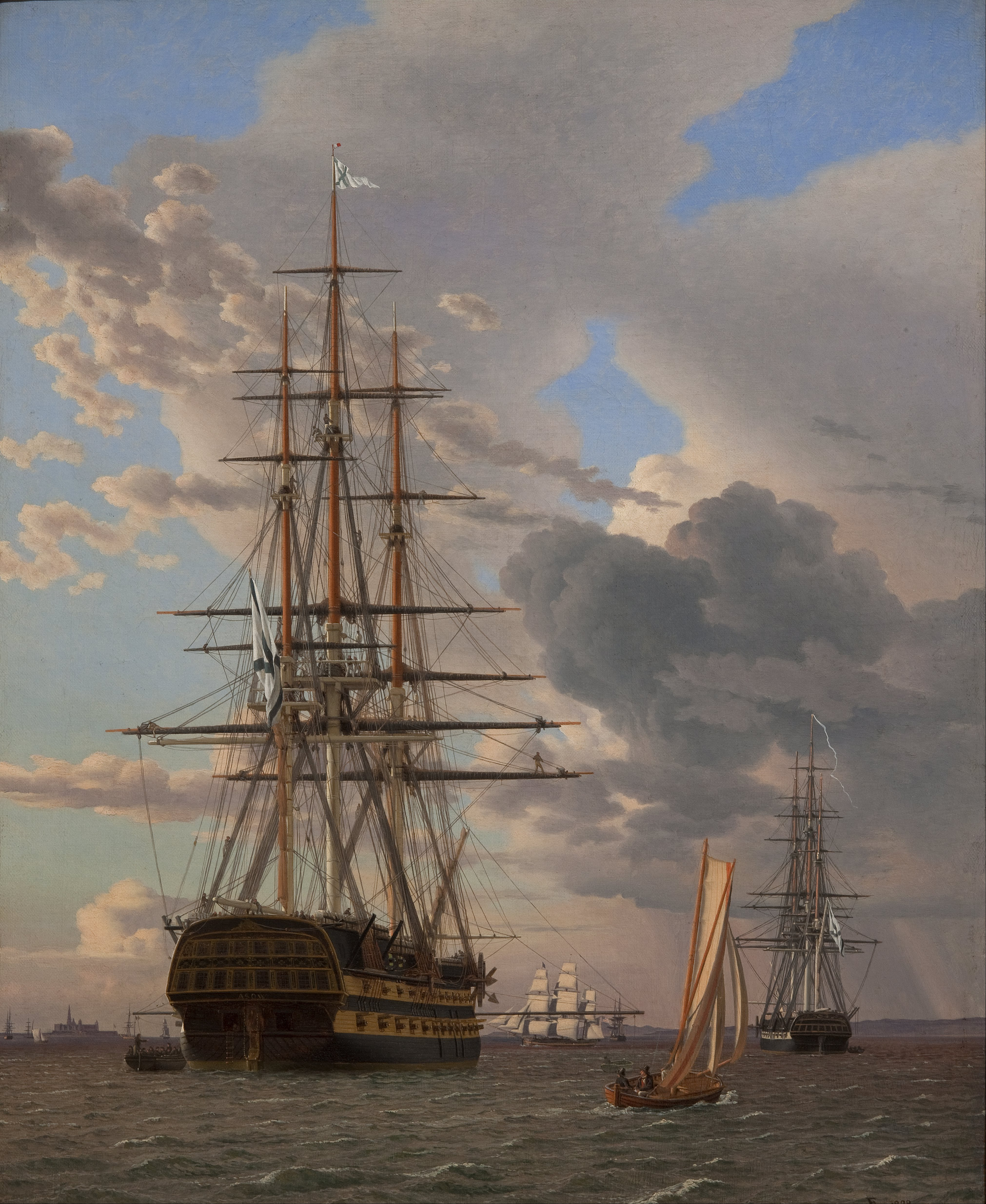Christoffer Wilhelm Eckersberg (1783–1853) was a Danish painter born in the southern part of Jutland. He went on to lay the foundation for the Golden Age of Danish Painting and is referred to as the Father of Danish painting. While an apprentice, he produced proficient drawings and paintings, but soon, having amassed some financial support from local well-wishers, he arrived at Copenhagen's Royal Danish Academy in May 1803. He was accepted into the Academy without payment. Because of conflict with his teachers, he did not win the Academy’s gold medal until 1809, after his principal tutor died. In 1810, Eckersberg married Christine Rebecca Hyssing – against his wishes – in order to legitimize his son, Erling Carl Vilhelm Eckersberg. Erling eventually followed in Eckersberg’s footsteps with an Academy education, and a career as a copperplate engraver.
Eager to travel, partly in order to escape the reality of this marriage, and just a few days after the wedding, Eckersberg made his way over Germany to Paris. Here he studied under neoclassicist Jacques-Louis David from 1811 to 1812. He improved his skills in painting the human form and followed his teacher's admonition to paint after Nature and the Antique to find Truth. After two years he traveled further to Florence and Rome, where he continued his studies from 1813 to 1816. Eckersberg painted one of his best portraits, a portrait of his mentor Bertel Thorvaldsen, in Rome in 1814, which was donated to the Academy of Art. Life in Rome agreed with him, and he was greatly affected by the bright southern light he experienced there. He produced a large body of work during those years, including several exceptional landscape studies, including this one.
"A View through Three of the North-Western Arches of the Third Storey of the Coliseum" was painted in 1815 or 1816 when Eckersberg sojourned in Rome, painting a series of works of the ancient ruins of the city. The details of the ruins are precisely observed as they appear at the site in Rome. The views of the city, however, are a construction as Eckersberg connected three separate views to create a new harmony. The Royal Engraving Collection has two sketches Eckersberg did to plan his work. It is a prime example of Danish Golden Age painting.
Eckersberg returned to Copenhagen and was named professor at the Academy, a position that had specifically been held open a decade awaiting his return. His greatest contribution to painting was through his revitalized teaching method of taking students out into the field, where they were challenged to do studies from nature. He introduced direct study from nature into Danish art, and encouraged his students to develop their individual strengths, thus creating unique styles. He developed an increasing interest in perspective because of his marine paintings. He wrote a dissertation on the subject called "Linear perspective used in the art of painting" and taught classes on the subject at the Academy. He made a small number of etchings that combine daily life observations with classical, harmonious principles of composition. This led the way to the characteristic way Danish Golden Age painters portrayed common, everyday life.
- Clinton Pittman
P.S. Read also about Marie and Peder Severin Krøyer - extraordinary Danish painters couple.


 C.W. Eckersberg
C.W. Eckersberg